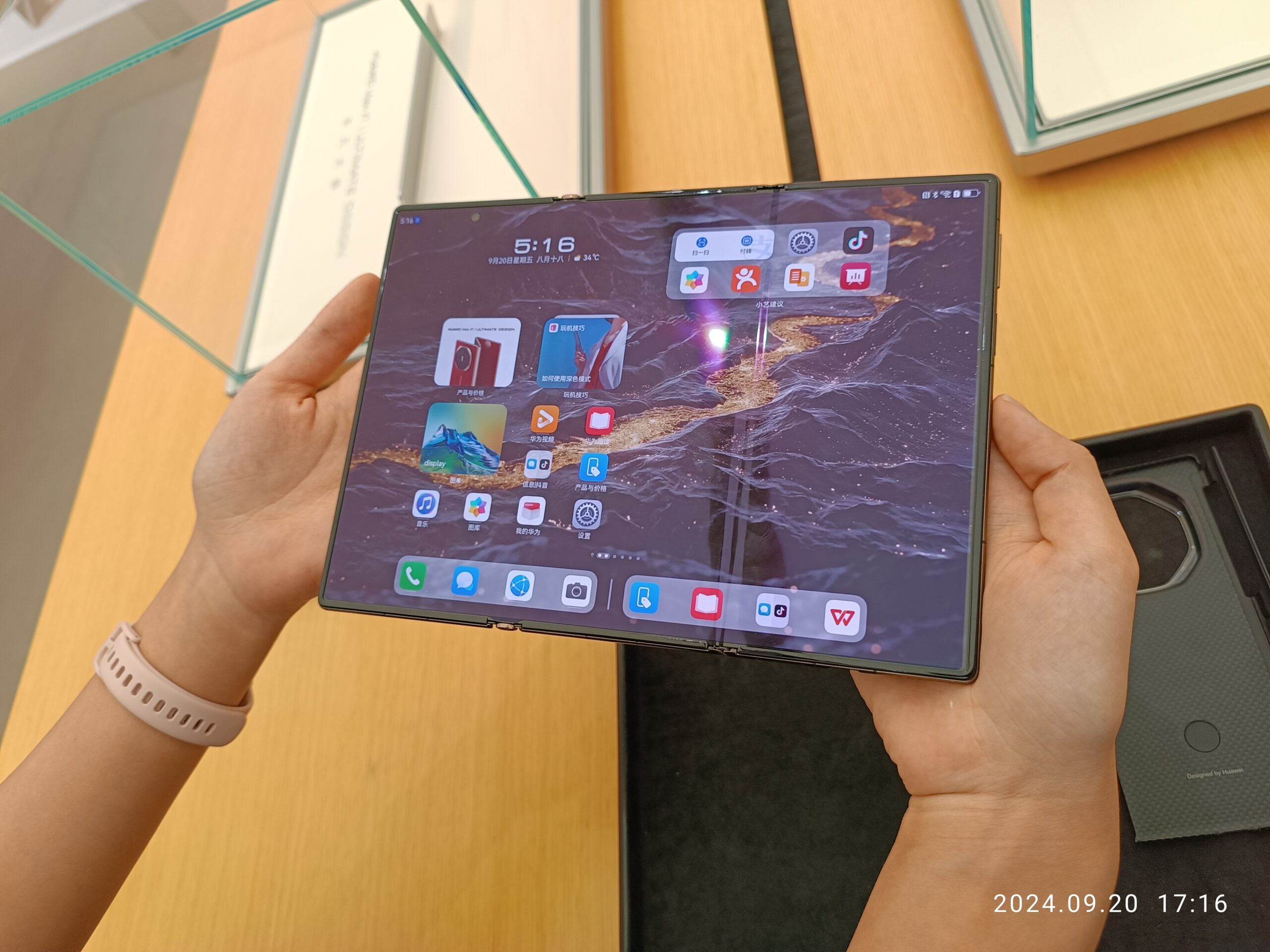
Huawei has boldly stepped onto the global stage with the launch of its trifold smartphone, the Mate XT, marking the tech giant’s strategic push beyond its home turf of China. Unveiled on Tuesday, this innovative device is positioned as a premium offering with a starting price of 3,499 euros ($3,660). The Mate XT represents Huawei’s attempt to regain its international foothold after its market share outside China plummeted to a mere 0.3%, as reported by the International Data Corporation.
The Mate XT’s unique selling proposition lies in its ability to fold at two points, allowing users to display content on one, two, or even three screens. Unlike conventional foldable devices that fold once either vertically or horizontally, this trifold design aims to capture the attention of affluent consumers who value exclusivity and luxury. Francisco Jeronimo commented on Huawei’s strategy, emphasizing the company’s focus on wealthy individuals more interested in showcasing their financial prowess than seeking the best user experience.
“I think what they [Huawei] believe that the trifold can be a unique value proposition and because it is very expensive, they aim to target wealthy individuals who are more keen on showing off they have the money versus having the best experience you can get.” – Francisco Jeronimo
Challenges in the Global Market
Despite this ambitious launch, challenges remain. Huawei’s app store lacks popular Google applications that many international consumers rely on. Neil Shah highlighted this gap, pointing out that without access to Google’s services such as Netflix, Google Play Store, or the latest GenAI features like Google Gemini, the Mate XT could struggle to appeal to mainstream international markets.
“Lack of Google still is a ‘gaping hole’ for mainstream international market especially those who will pay top dollar for a tri-fold hardware but which want to run Netflix or Google’s Play Store or the latest cutting edge GenAI Google Gemini features.” – Neil Shah
Once a leading player in the global smartphone market, Huawei’s trajectory was significantly altered by U.S. sanctions starting in 2019. These restrictions severed Huawei’s access to advanced chips and Google’s Android operating system, causing its market influence outside China to wane. However, within China, Huawei has seen a resurgence, with its market share rising from 12% in 2023 to 17% in 2024 according to IDC data.
Huawei’s strategic gamble on the Mate XT underscores its ambition to leverage domestic momentum for an international comeback. While specific countries for the Mate XT’s release remain unannounced, even modest sales could generate substantial revenue for the company. Selling half a million units could yield approximately $1.5 billion.
Author’s Opinion
Huawei’s efforts with the Mate XT show a strategic attempt to assert itself in the premium smartphone market, despite significant barriers. While the device’s unique design is a notable draw, the lack of access to Google services remains a critical hurdle in appealing to international users. The company’s future success will depend on navigating both these technological challenges and the geopolitical landscape surrounding its operations.
Featured image credit: Wikimedia Commons
Follow us for more breaking news on DMR
